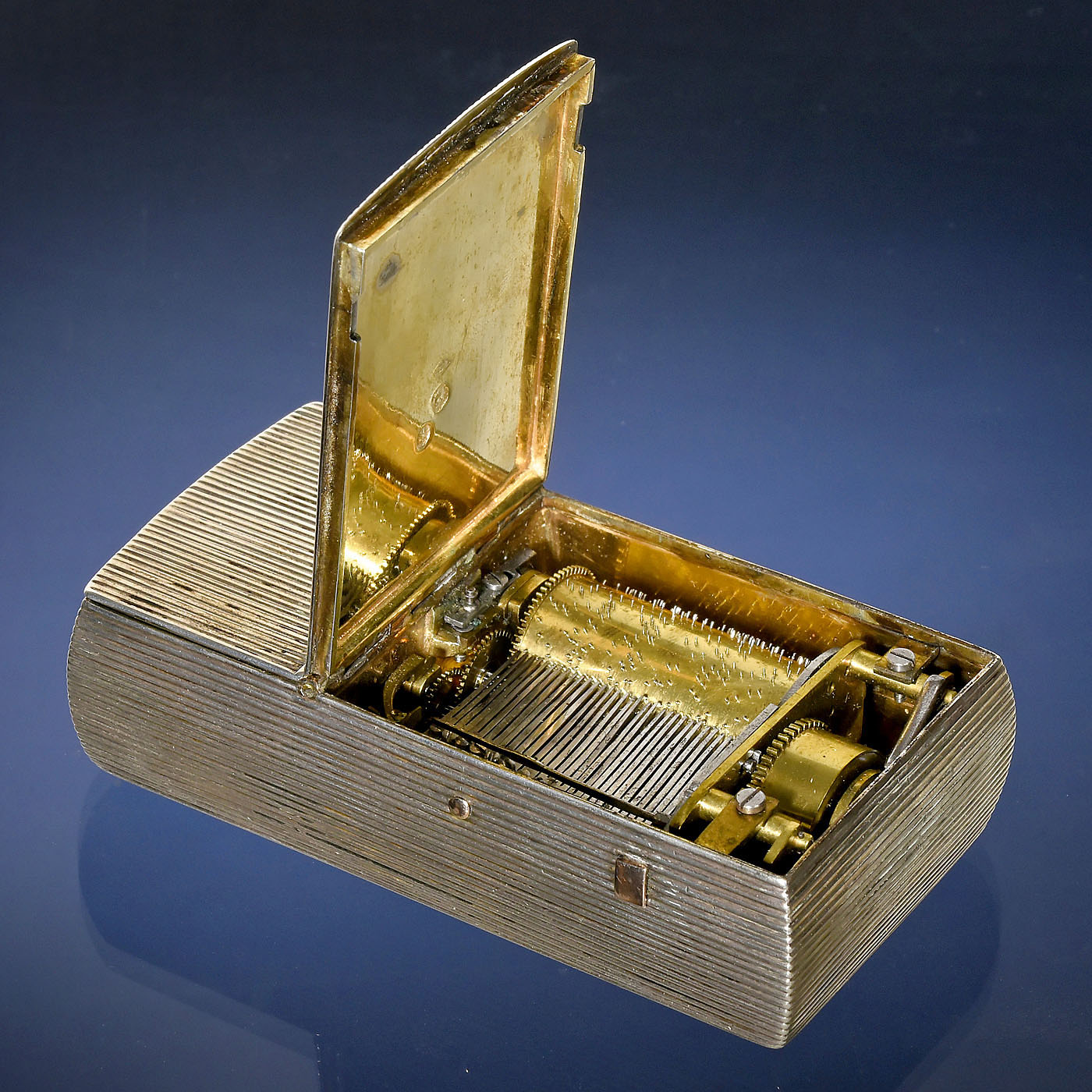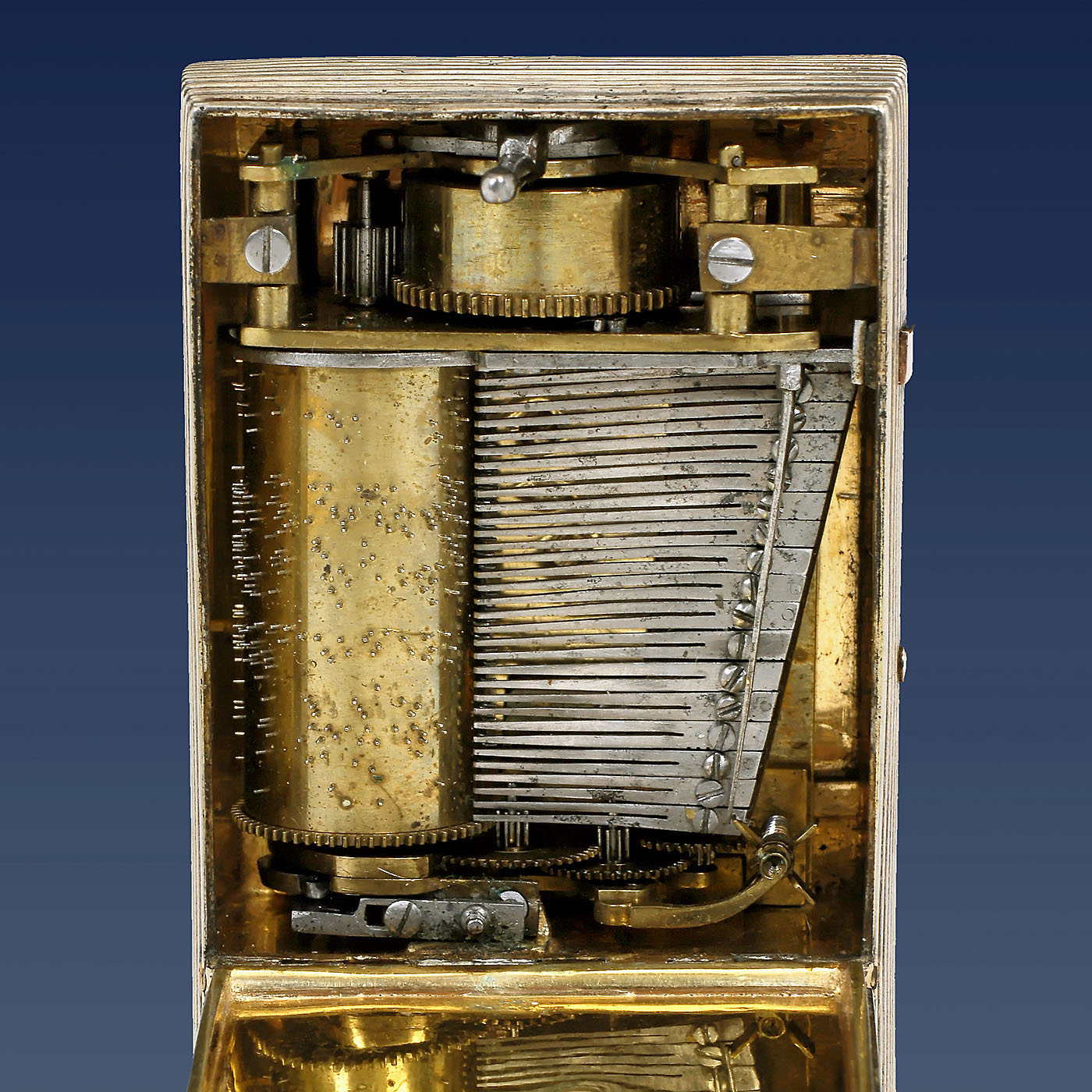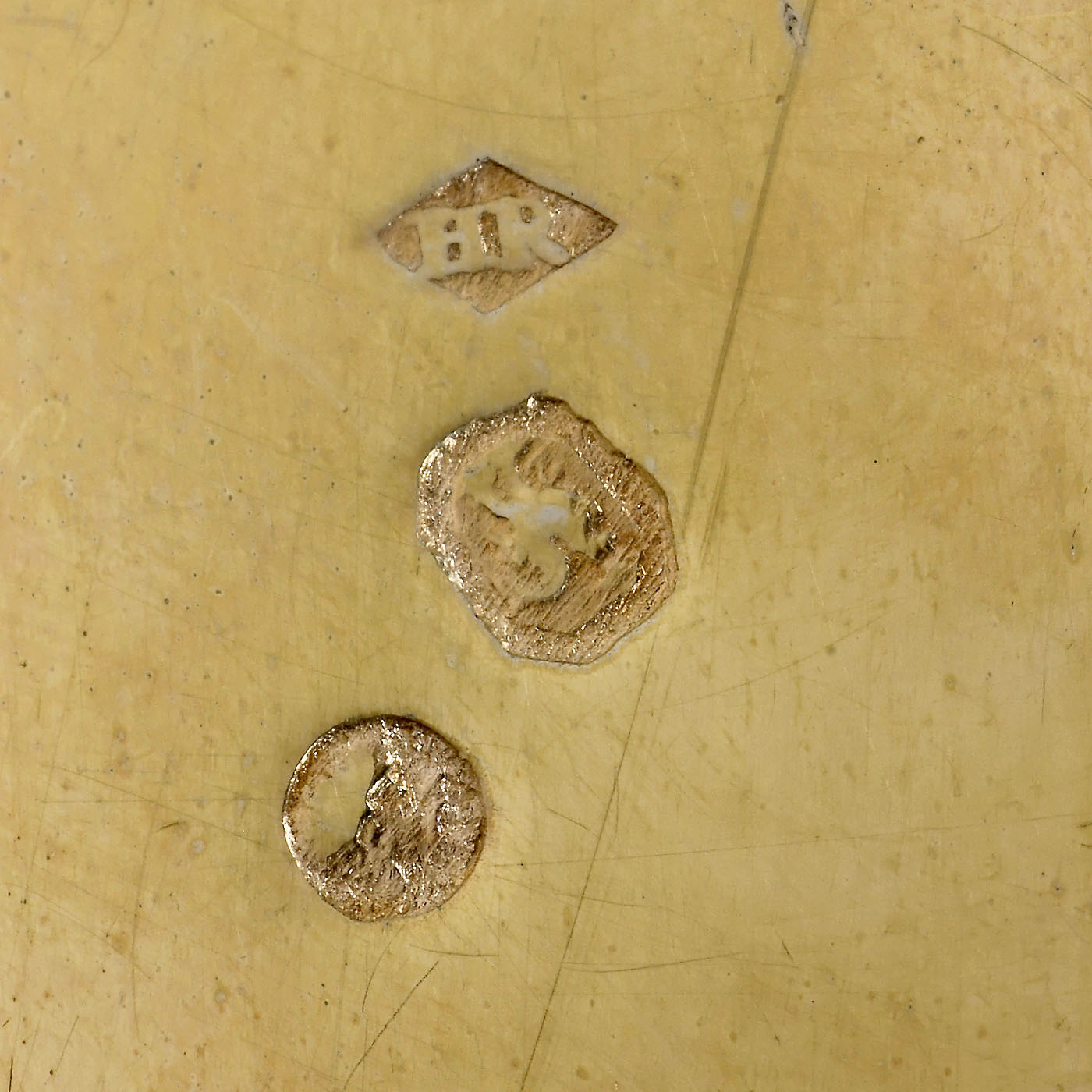


Playing two airs, with sectional comb in 17 pairs of teeth (complete, two pairs expertly replaced), each section marked with Roman numerals from I to XVII (not removed for inspection), going-barrel movement with steel winding lever and four-winged governor, in reeded silver case with two sections with hinged lids, polished interior and French marks for the period 1809-1819, wd. 3 ½ (9 cm) x dp. 1 ¾ (4,5 cm), cylinder 1 ¼ in. (3,2 cm), movement in good restored playing condition. - Literature: Luuk Goldhoorn, "A Real Carillon Without Bells or Hammers", in: "The Music Box" (MBSGB), Vol. 18, no. 5, pp. 124-127; Eduard C. Saluz, "Klangkunst" (Zurich, 1996), p. 17. - In his detailed article, Goldhoorn draws parallels between the movement offered here and Antoine Favre-Salomon's presentation of a "musical work without bells" described in a report by the commission of the Geneva Society of Arts on 7 March 1796. Favre's invention is widely regarded as the first musical work with tuned teeth and, thus, the first musical box of the form we know today. "We (the commission) have seen a musical work without bells, playing two melodies, the sound imitating the mandoline. The work is built into the bottom part of a snuffbox of normal dimensions". Goldhoorn highlights a series of features to support his argument that the movement here, though postdating Favre's, was "built in accordance with a carillon". One such is the use of pairs of teeth tuned to the same pitch, a construction devolved from a carillon with two hammers for each bell. Other noteworthy details include a unique tune-change slide with return spring housed inside the cylinder. Not only is a winding lever rare to find on a full-sized musical box produced before c. 1850, but the going-barrel spring and the overall layout of this miniature piece make it one of the earliest, as well as the smallest, cartel movement documented.

